Shells, corals, and encrustations on the necks of bottles seasoned with a rich background storytelling and prices that are nothing short of generous. It sounds like the perfect recipe to annoy a good chunk of wine enthusiasts. Yet, behind the labels aged at the bottom of the sea, there is a complex world of research and innovation. One thing is certain: wine that has rested in the darkness of the abyss changes flavor; the influence is there and can be perceived at a sensory level. This is demonstrated by blind tastings, it's not just suggestion, each type seems to respond differently to marine influences. Let's take a step back, water and wine have never gotten along very well. A turning point comes on a hot summer day. It's July 16, 2010, when a diver spots a wreck lying on the seabed south of the Åland Islands archipelago, in the Baltic Sea, on the border between Sweden and Finland. It's a ship that disappeared in 1840, shuttling between France and the court of the Tsar in St. Petersburg. On board, at a depth of 55 meters, an unusual treasure is found: 168 bottles of Champagne. Forty-seven of these are fairly easily identified, they're from a small still-active maison, Veuve Clicquot. The bottles, tasted by a jury of international experts, are surprisingly still in good shape, the Champagne was sweet, as dictated by the times, but the evolution significantly better than expected.
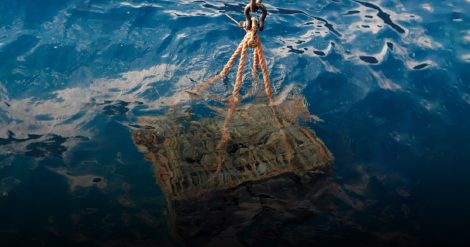
Wines at the bottom of the sea
The spotlight is turned on the potential of the abyss, the absence of light and the constantly low temperatures of the marine depths acquire the scent of opportunity. The dance begins, research and experimentation movements gain strength, especially in Spain and Italy. Truth be told, a couple of visionaries were already ahead with their studies. Among them stands out Piero Lugano of the Bisson winery in Chiavari, who decided to refine his classic method at a depth of 60 meters already in 2009. The intuition arose from a need: he didn't have enough space in the cellar for storage, so he decided to let the bottles (crown cap) age underwater and then uncork them on land.
First trials
On the Adriatic coast, Gianluca Grilli was among the first to submerge his wines. He chose the seabed of the former Paguro platform as a marine base, the Agip station installed off the coast of Ravenna that exploded in 1965. Over time, it formed a seabed at a depth of 35 meters which began to host Albana, Sangiovese, and more. From individual producers' initiatives, a specialized reality has developed over time, founded in 2015 by three young men: Jamin Underwater Wines from Portofino. Today it is among the world's leading companies, it doesn't produce wine but provides services and know-how. It manages all loading and unloading operations, monitoring, and data analysis. Thanks to a private event organized by Ais Lazio, we got a firsthand look at a rapidly growing reality. Globally, in 2022, there were about 400 thousand bottles aged underwater, in 2021 there were only 100 thousand. The 2023 figure is around 800 thousand units, with 150 thousand coming from our seas. In Italy, there are about ten wineries that independently choose to age wine underwater, many rely on Jamin, which has already validated about 200 oenological references.
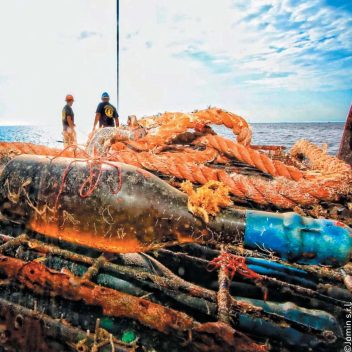
The depth
Pure marketing operation or suggestion? We talked about it with Antonello Maietta – three terms at the helm of the Italian Sommelier Association - now president of Jamin. "The constant temperature and pressure on the cork are the defining elements, it's as if the wine is resting in a hyperbaric chamber," he begins. At depth, the temperature of the Mediterranean is between 13 and 14 degrees, a perfect match for wine. "Of course, if you only want encrustations on the bottles, you can just attach them to a boat at the dock for a month. The work we do is slightly more complex," he points out. For every 10 meters of depth, one bar of pressure is acquired, around 50 meters you have the same atmospheres as a Classic Method. The monitored underwater cellars are located between Portofino, Ravenna, Termoli, Acquappesa, and Scarlino. But given the surge in requests, openings are already planned in Cala Violina (Grosseto), Pantelleria, and many others. If viticulture is moving higher and higher, aging is heading for the depths to take advantage of the sea's coolness. The effect on wine? "Each wine category has a specific response. It depends on the variety, the type of processing, and how long it ages underwater. Our protocols are calibrated on 6-month intervals, there are bottles aging underwater since 2016."
We tasted strictly blind 12 samples, the same wine aged in the cellar and underwater. The changes are evident even to a not too experienced taster, but with mixed results. "Experiments on sparkling wines were the first, but I'm not convinced that it's the product that benefits the most. In general, wines that are too delicate, like very light whites, don't work well. Different story with very tannic reds and in general wines with adequate alcohol levels, at least 13%. And now we're also aging vermouth and gin underwater." In short, Prosecco underwater really makes little sense. The first difference we notice is in color. Already from the reflections, we can imagine which of the two samples was cradled by the marine currents. They indeed have brighter and more brilliant hues, less concentrated than the same vintage aged in the cellar. Only on the excellent Marsala Vergine Riserva 1980 by Francesco Intorcia do we have no clues. No, we don't perceive a more intense minerality flaunted by several producers. Luckily, it would be the clue of a contamination certainly not wanted. The discriminating factor seems to be time, sometimes accelerated, sometimes compressed.
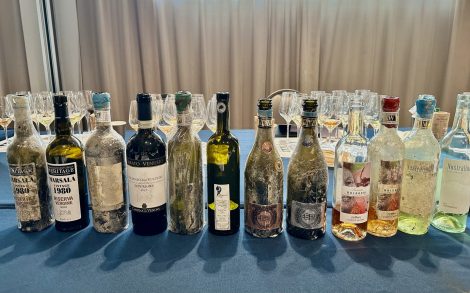
Tasting
Overall, sea-aged wines seem younger, fresher, and more lively; the slower and gradual evolution is reminiscent of the comparison between magnum and standard bottle. The acidity, in particular, is more pronounced in marine wines. We also tasted two Champagnes, labels owned by Jamin, produced by the renowned maison Drappier. The sample aged for 18 months at sea has a finer and more integrated carbonation in the structure compared to the sample aged for only 12 months on the seabed. To proceed with underwater aging, a maritime concession must be obtained, starting a bureaucratic process and acquiring complex equipment. Baskets of 500 and 1000 bottles with sensors are needed, and a pontoon must be rented for operations, costing between €12,000 and €13,000 for immersion and the same for extraction. Due to pressure, divers are forced to stop every 10 meters. Operational costs? They can range from €4 to €16 per bottle depending on the quantity. "That's why it makes sense to age only wines that in imagination can reach a certain price threshold." It's no coincidence that we started with Champagne. The Jamin method (from the Ligurian dialect, "giaminare" meaning to work hard) involves capsules made with a mixture of shellac, wax, and some natural resins.
Sustainability
The aspect of the story that convinces us the least is the emphasis on environmental sustainability. The company highlights energy savings thanks to the natural air conditioning of the sea, reduction of land consumption to accommodate new bottles, and protection of natural areas. Also, the polymer, the film that wraps the bottles at sea, is biodegradable. All well and good, but the aging is currently done on wines that are already finished and processed, labels that have obtained the DOC, so to speak. Therefore, it's an additional step, a surplus of work, with bottles traveling hundreds of kilometers to taste the silence of the sea, the operations on the seabed, and the return to the cellar. The lever of sustainability seems rather forced, the thinking is still evolving. The concept of nearby underwater cellars enters forcefully, in order to exploit the potential of the terroir in the vineyard and the "merroir" in the cellar.
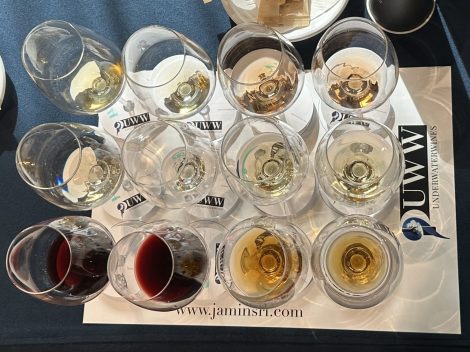
The projects
"Today we are facing very different agronomic projects, there are wines that are originally intended to be aged underwater. The analyses are becoming more and more sophisticated, the trend is to age the wine in the sea in the same region of origin, as close as possible to the production site," explains Maietta. And there are also individual experiments in lakes, such as Lake Iseo, but also in Alsace. In the United States, however, the movement is frozen, regulations prohibit aging wine in the sea for hygiene reasons. In August 2023, two producers were reported and thousands of bottles seized, yet wines aged on Italian seabeds can be marketed without any issues. Jamin transformed into a benefit corporation at the end of 2023, raising €600,000 in a few hours through crowdfunding. 30% of the turnover is invested in research and development, there is a scientific path to build. The depth of immersion creates a pressure from the outside towards the cork, while the currents generate a continuous rocking: the wines react to these inputs. As in the case of wine treated with Mozart, the reorganization is physical. Wines find a new organization, a new balance of forces between hard and soft components. The sea doesn't add, doesn't transform, but molds. Let's avoid immersing wines that have little to say.

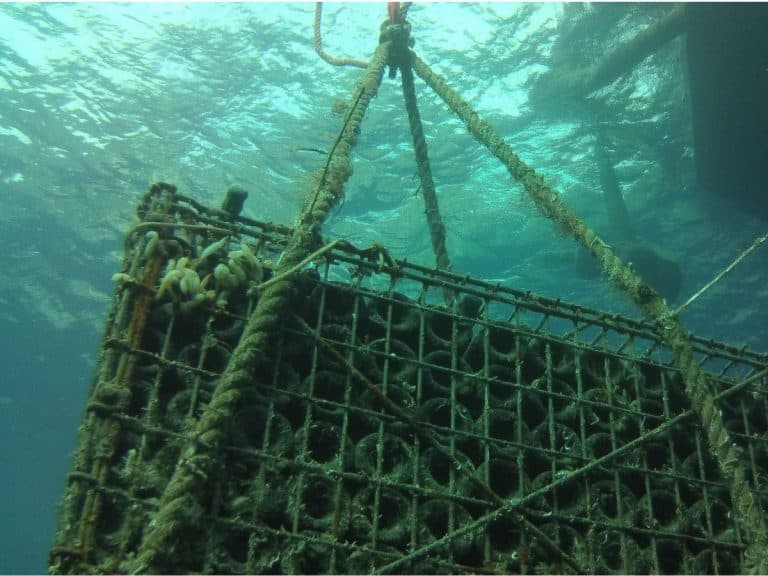
 Meloni: "Tariffs? If necessary, there will be consequences. Heavy impact on agri-food sector"
Meloni: "Tariffs? If necessary, there will be consequences. Heavy impact on agri-food sector" The Government honours the greats of Italian cuisine, from Bottura to Pepe. Massari: "Thank you, Meloni, the only one who listened to us"
The Government honours the greats of Italian cuisine, from Bottura to Pepe. Massari: "Thank you, Meloni, the only one who listened to us" "We must promote a cuisine that is not just for the few." Interview with Massimo Bottura
"We must promote a cuisine that is not just for the few." Interview with Massimo Bottura Wine was a drink of the people as early as the Early Bronze Age. A study disproves the ancient elitism of Bacchus’ nectar
Wine was a drink of the people as early as the Early Bronze Age. A study disproves the ancient elitism of Bacchus’ nectar "From 2nd April, US tariffs between 10% and 25% on wine as well." The announcement from the Wine Trade Alliance
"From 2nd April, US tariffs between 10% and 25% on wine as well." The announcement from the Wine Trade Alliance






